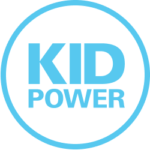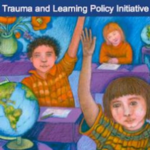Child Advocacy
The Minnesota Education Equity Partnership has created toolkits to create safe and supportive schools for Immigrant & English Learner (EL) students, particularly those in Minnesota. MNEEP believes in the dignity of every student where their humanity is honored and they have the opportunity to succeed in school. Recognizing that challenges facing students threaten this reality, these toolkits are intended to support administrators and partners in fostering healthy environments for all.
The State of California and CSBA (California School Boards Association) has created a dedicated website to immigration-related resources for school districts and personnel. Included in these resources are quick guides for school officials, student family checklists, and the Bureau of Children’s Justice Resource Page as well as other relative resources to supporting children and youth in the education system.
California Department of Justice (Office of the Attorney General) has provided a quick reference guide for school officials should an immigration-enforcement officer come to their academic institution. This quick reference guide aids conversations and ensures that all rights are protected.
Baker McKenzie in partnership with One North has created a multi-state resource guide to support unhoused youth. Included information guides youth in areas including knowing their rights particularly as it impacts their lives.
Together for Girls is an international organization spotlighting the importance for youth advocacy and violence prevention against children. Their 2022-2023 impact report spotlights the preventability of violence and importance of change through partnership models.
The Annie E. Casey Foundation has produced its 35th edition of the KIDS COUNT Data Book. The report examines unprecedented declines as a result of the COVID-19 pandemic’s effect on children and education. The 2024 KIDS COUNT Data Book assesses recent trends in child well-being and provides data profiles by state. National data profiles are available in both English and Spanish through their website: aecf.org/resources/2024-kids-count-data-book
IDEAS Empowered by Youth® PBL Curricula is a pioneering approach to youth education, ideally tailored for today’s rapidly evolving, technologically-driven, and globally connected world. The Curriculum Fundamental Training prepares educators to present PBL curricula for students. By preparing educators to instill a culture of self-directed learning, it emphasizes crucial skills that today’s youth require: effective communication, collaborative learning, creativity, critical thinking, and emotional intelligence.
April is nationally recognized as Child Abuse Prevention Month. Help prevent child abuse by downloading the contents below and sharing them with your children.
This Child Abuse Prevention Month Toolkit features printouts, worksheets for parent and child, videos, a Powerpoint presentation, hotlines to call, signage, and more.
April is National Child Abuse Prevention Month, a time to recognize the efforts of those who support children and strengthen families, and uncover the ways we can all play a part in keeping children safe and unharmed. We invite you to leverage the information, tools and resources we put together in this collection.
Kid Power is an interactive video platform for students in grades Kindergarten through 8th. Kid Power combines philanthropy and fun with mental health, social-emotional learning (SEL), child rights, and equity and access for all students.
This article is about how to help children when there are tragic events transpiring.
The Trauma and Learning Policy Initiative’s (TLPI) mission is to ensure that children traumatized by exposure to family violence and other adverse childhood experiences succeed in school. To accomplish this mission, TLPI engages in a host of advocacy strategies including: providing support to schools to become trauma-sensitive environments; research and report writing; legislative and administrative advocacy for laws, regulations, and policies that support schools to develop trauma-sensitive environments; coalition building; outreach and education; and limited individual case representation in special education where a child’s traumatic experiences are interfacing with his or her disabilities.








